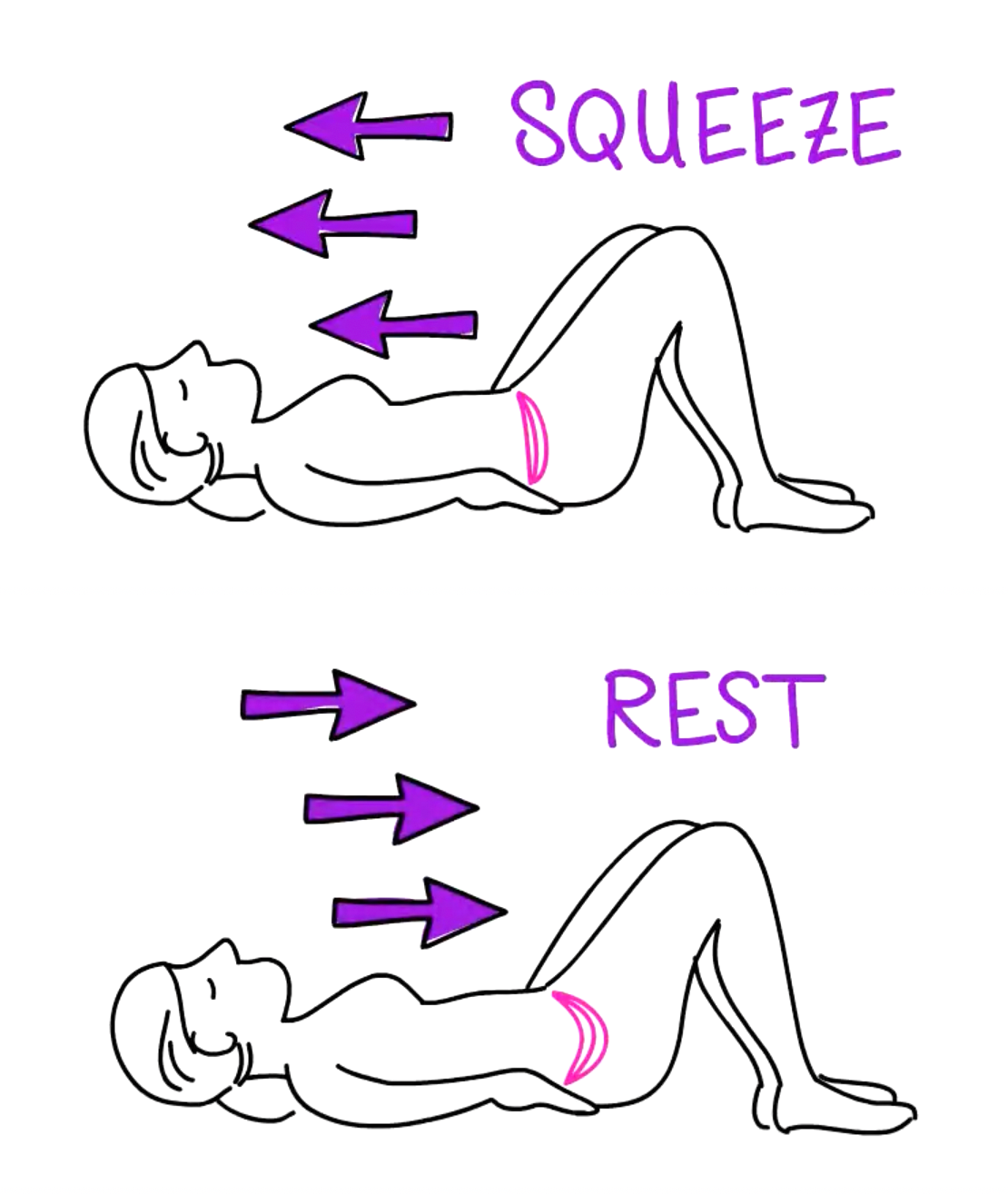
Exercises
Below are some examples of common exercises that can be done postpartum or as part of a general exercise program, once you have mastered the basic Kegel and have been given clearance by your pelvic physiotherapist. Exercises should be scaled to what feels good to you in your body and should not bring symptoms such as pain, pressure, leaking, or feeling the need to hold your breath. Take time to connect with your pelvic floor and core and then progressively increase the difficulty of the exercises as you get stronger.
Reminder of the Basic Kegel
To learn to activate your pelvic floor muscles (ie: do a Kegel) practice the following:
Contract your pelvic floor like you are stopping yourself from passing gas and stopping the flow of urine. It should feel like a tighten and a lift. Try holding for 2-3 seconds, then relax. Make sure you relax COMPLETELY! Repeat this up to 10x, 3x/day
You can then practice holding for longer; hold for up to 10 sec, and do this 10x, 3x/day
You can also practice doing a quick contraction followed by a full relaxation 10x, 3x per day.
It is recommended to do these exercises for 3 months to improve awareness and basic strength for the pelvic floor muscles.
Remember:
Don't contract your pelvic floor at the same time that you’re peeing; on the toilet is not the time to do your pelvic floor exercises!
Don't tighten your buttocks, thighs, or tummy muscles while you’re doing your pelvic floor exercises; these muscles should stay fairly relaxed
Don’t hold your breath
Bird Dog
Gently connect to your pelvic floor (squeeze and lift) and draw in your abdominal wall
Lift your right arm and left leg, then lower
Lift your left arm and right leg, then lower
Repeat
Bridge
Lay on your back, feet on the floor, knees bent
Gently connect to your pelvic floor (squeeze and lift) and draw in your abdominal wall
Press your feet into the ground and lift your pelvis
Slowly lower
Repeat
Plank
There are many variations of plank to progress through
You can start in a plank position with your hands on a wall or a table; once this gets easy, progress to your knees with your hands on the floor; once that progression gets easy, lift your knees and plank from your hands and toes.
Gently connect to your pelvic floor (squeeze and lift) and draw in your abdominal wall while you are doing the plank, and make sure you are breathing comfortably
Gradually build up the time in the plank position
Dead Bug
Lay on your back, feet on the floor, knees bent
Gently connect to your pelvic floor (squeeze and lift) and draw in your abdominal wall; raise your arms toward the ceiling and lift your legs so your hips and knees are bent to 90 degrees
Continuing to stay connected to your abdominal wall and pelvic floor, lower your right leg and stop just before you reach the ground while you reach your left arm overhead; then raise them again; then lower your left leg and reach your right arm overhead; then raise them again
Repeat
Curl Up
Lay on your back, knees bent, feet flat on the floor
Gently connect to your pelvic floor (squeeze and lift) and draw in your abdominal wall
Bring the chin down, then bring the lower ribs toward the top of the pelvis and curl up lightly (so that the head and shoulders are off the floor)
Slowly lower
Repeat





